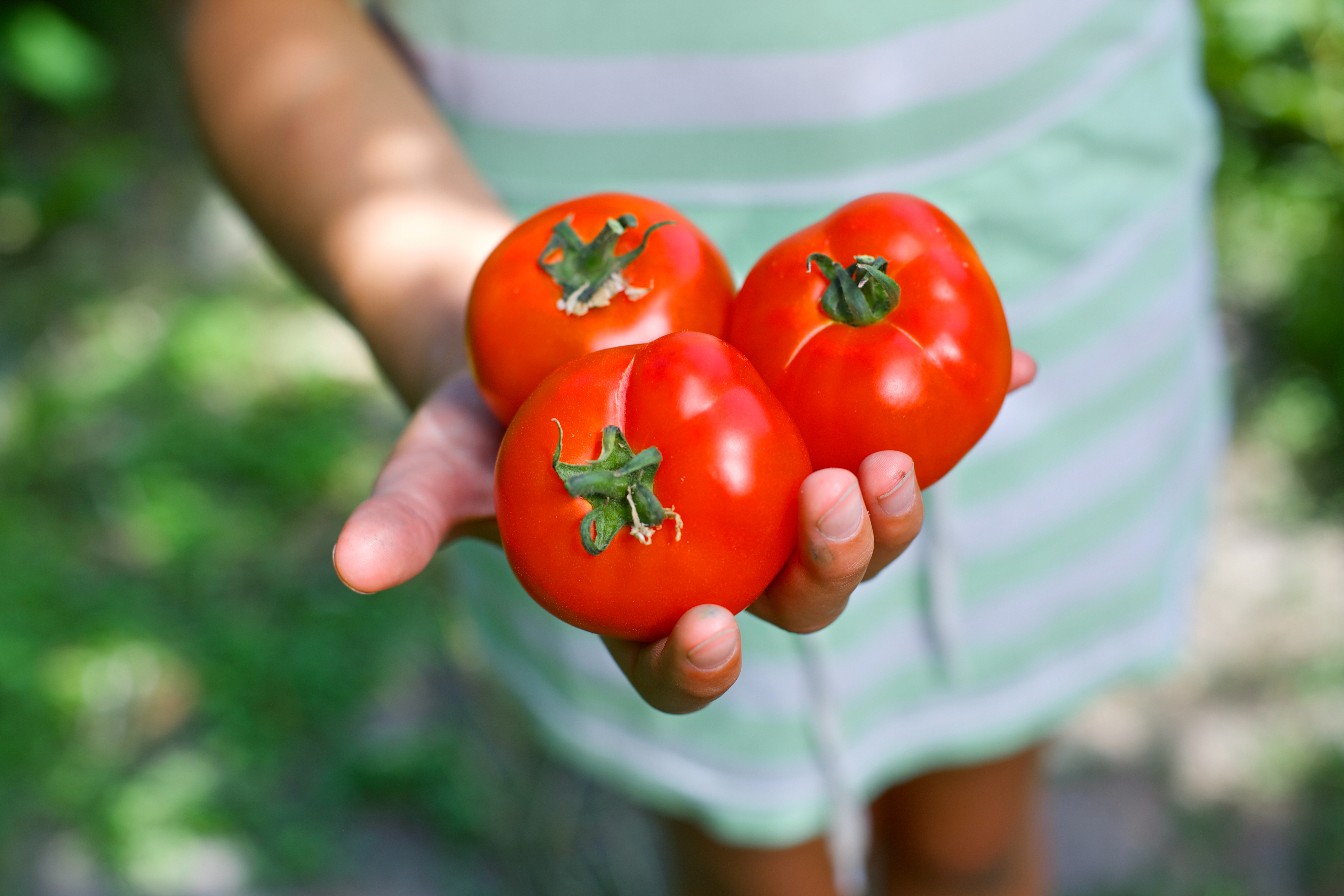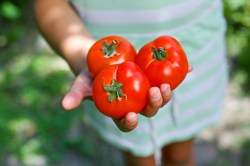
Gather BaltimoreArthur Morgan during a rare idle moment.
Arthur Morgan doesn’t have time for my shit. He has to pick up 27,000 pounds of watermelons, his phone is ringing off the hook, and those fucking pallets of radishes and green beans aren’t gonna give themselves away, you read? Morgan jumps into the back of his refrigerated truck, shooing me and my reporter’s notebook in the direction of his “articulation guy,” Joe Hamilton.
Hamilton and Morgan belong to a new food recovery organization called Gather Baltimore. Every week — under the direction of the energetic, foul-mouthed Morgan — volunteers collect some 15 tons of fresh produce that would otherwise end up in the compost, or more likely, the landfill. Then they give it away to people who need it. Hamilton, a development director who volunteers with the organization, articulates it thus: “The thing I love is it’s such a simple idea. It’s one of those ideas that when you see it, you think, How is this not happening already? How did we miss it?”
In the United States, around 40 percent of the food we produce goes to waste, while nearly 15 percent of American families experience food insecurity in a given year. It wouldn’t take much of an arm to kill those two birds with one stone. In fact, organizations like City Harvest in New York City, Food Runners in San Francisco, and Philabundance in Philadelphia have bridged the gap between wasteful food operations and the hungry for decades. But as awareness about our very leaky food system increases, even on the part of the government, new organizations with different takes on the problem are spreading like, uh, apple rot. Some focus on gleaning, others on farmers markets or restaurants. One even targets college dining halls. (Because it sure would be a shame to toss those pasteurized liquid eggs.)
In Gather Baltimore’s case, the food currently comes from several sources, including farmers markets and one of the largest produce distributors in the mid-Atlantic. It started small, as these things do. Morgan is an urban farmer; he noticed that he wasn’t able to sell, or easily give away, all of the food he grew. And manning his stall at the local farmers market, he witnessed the waste produced by large-scale operations. “You talk to most farmers and they’re like, ‘You think you have excess?’” he says.
Morgan started distributing bins for food donations once the market ended each week. He took what was donated to food pantries. Before long, he had to call friends to bring their vehicles to help haul away the donations. Then farmers began inviting him out to glean all the produce that remained in the fields after harvest. Finally, in 2012, Morgan received funding through Open Society Institute-Baltimore and Gather Baltimore was officially born. The organization now has two refrigerated trucks and feeds 200 to 500 families a week.
A visit to a produce distributor that shall remain unnamed indicates the potential of organizations like Gather. We back up to one of the facility’s 26 truck bays and enter a massive refrigerated staging area. The walls are lined with shelving piled some four stories high with mesh bags of onions. Workers on beeping pallet trucks careen to and fro, carrying boxes of tomatoes, arugula, oranges, prickly pears. One helps us load up about 3,000 pounds of unsightly, out-of-date, or overstocked cantaloupes, apples, lettuce, and radishes, a relatively small load. (One weekend, Morgan hauled away 34,000 pounds of acorn squash.) The haul likely represents a fraction of a day’s waste for the facility. But because Gather Baltimore doesn’t yet have a refrigerated storage space, once the two trucks are full, all of the food must be given away before Morgan can return.
In a typical week, Gather Baltimore collects food from facilities like this at least once a week, hosts a volunteer-fueled gleaning day on one of several local farms, and collects numerous bins of leftover produce from the farmers market. Gather gives much of the food away at a weekly farm stand in the struggling East Baltimore neighborhood of Oliver. The farmers and distributors get a tax write-off, Morgan says, and don’t have to deal with disposing of their waste. And needy city residents get healthy food. “It’s a win-win-win for frickin’ everybody,” he says.
On a recent Sunday, the farm stand looked like any other farmers market, with long tables spread with an astonishing variety of produce, from leeks to pineapples to mint. Volunteers worked in the background; a local college basketball team unpacked a truck full of watermelons, tossing them assembly-line style. Hundreds of customers, many in their Sunday best, arrived long before the market opened, armed with cloth bags and wheeled carts. Several brought lawn chairs.
It was Joan Thomas’ third visit. She collects donated food for several elderly neighbors on a fixed income. “Before I found this farm stand, it was a lot of canned goods, processed foods,” she said. “Now one of the ladies says, ‘Joanie, this is like when I was little. I haven’t seen food like this for years.’”
At the end of the day, Gather delivers excess food and some they’ve set aside to local charitable organizations. And then the cycle begins all over again. It’s a staggering amount of work, but Morgan hopes this is just the (slightly blemished) tip of the iceberg lettuce. He says that, with funding for a refrigerated storage space, he could collect and distribute at least two to three times his current average, set up more farm stands, and open a distribution center to supply residents and local charities. “There’s no limit to where this thing can go,” he says.
Unfortunately, the bounty isn’t paying the bills at present. The labor is intensive, the trucks and their refrigeration units guzzle as much as $500 a week in gas, and the services of insurance companies and mechanics can’t be bought with cucumbers. Gather is currently seeking funding through numerous channels — including crowd-sourcing.
But, as a matter of survival, the organization has already settled on one change: Soon, the food they give out won’t be free. The details haven’t been settled, but Morgan says customers will likely pay $5 or $6 for a bag of produce worth $50. He’s gotten some grief about this, he says, but he’s unapologetic. “The whole thing is not to give away free stuff,” he says, “but to make healthy food affordable and accessible.”




